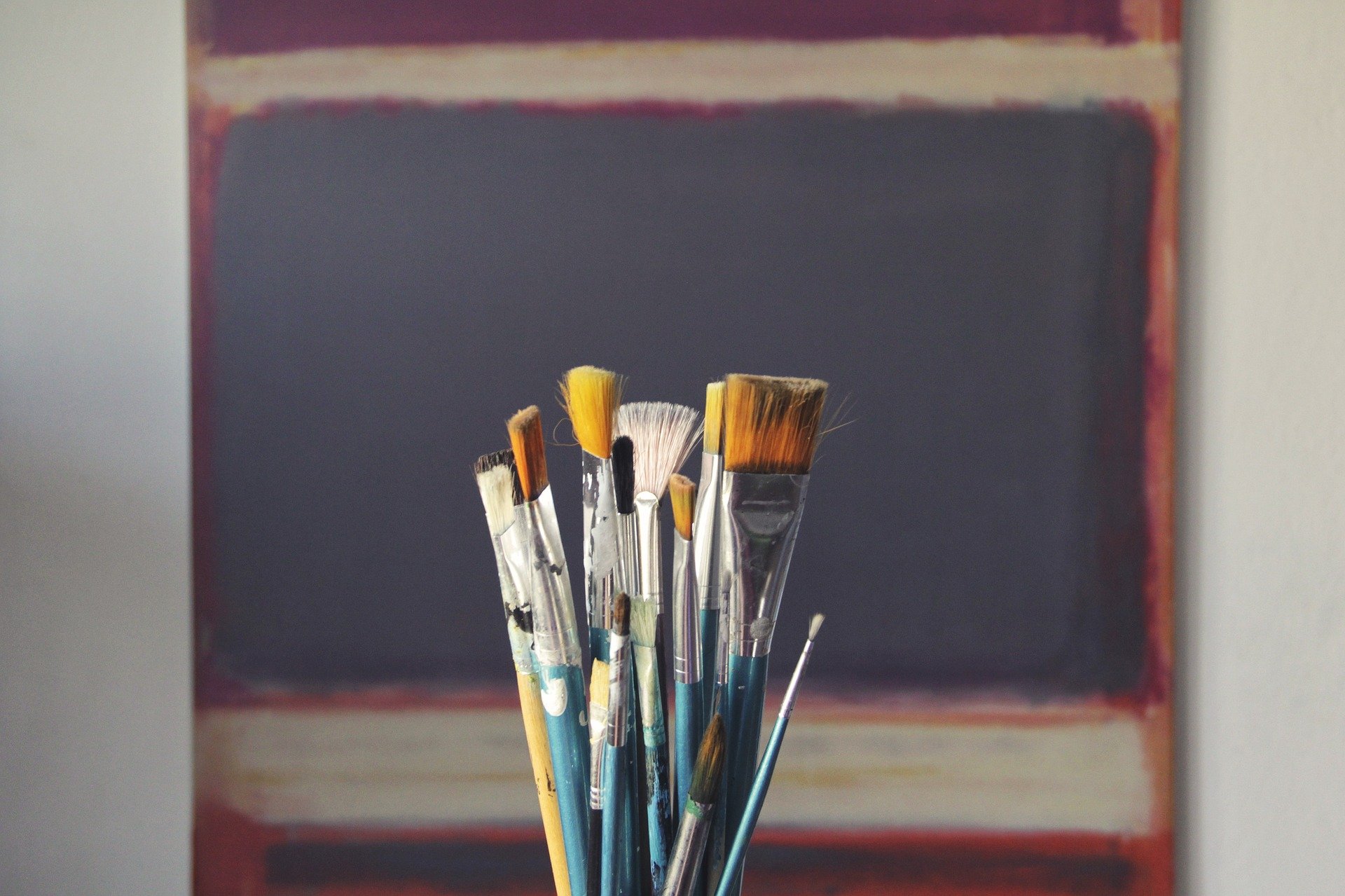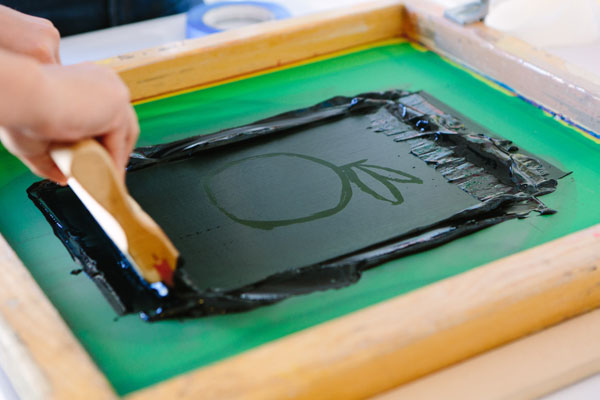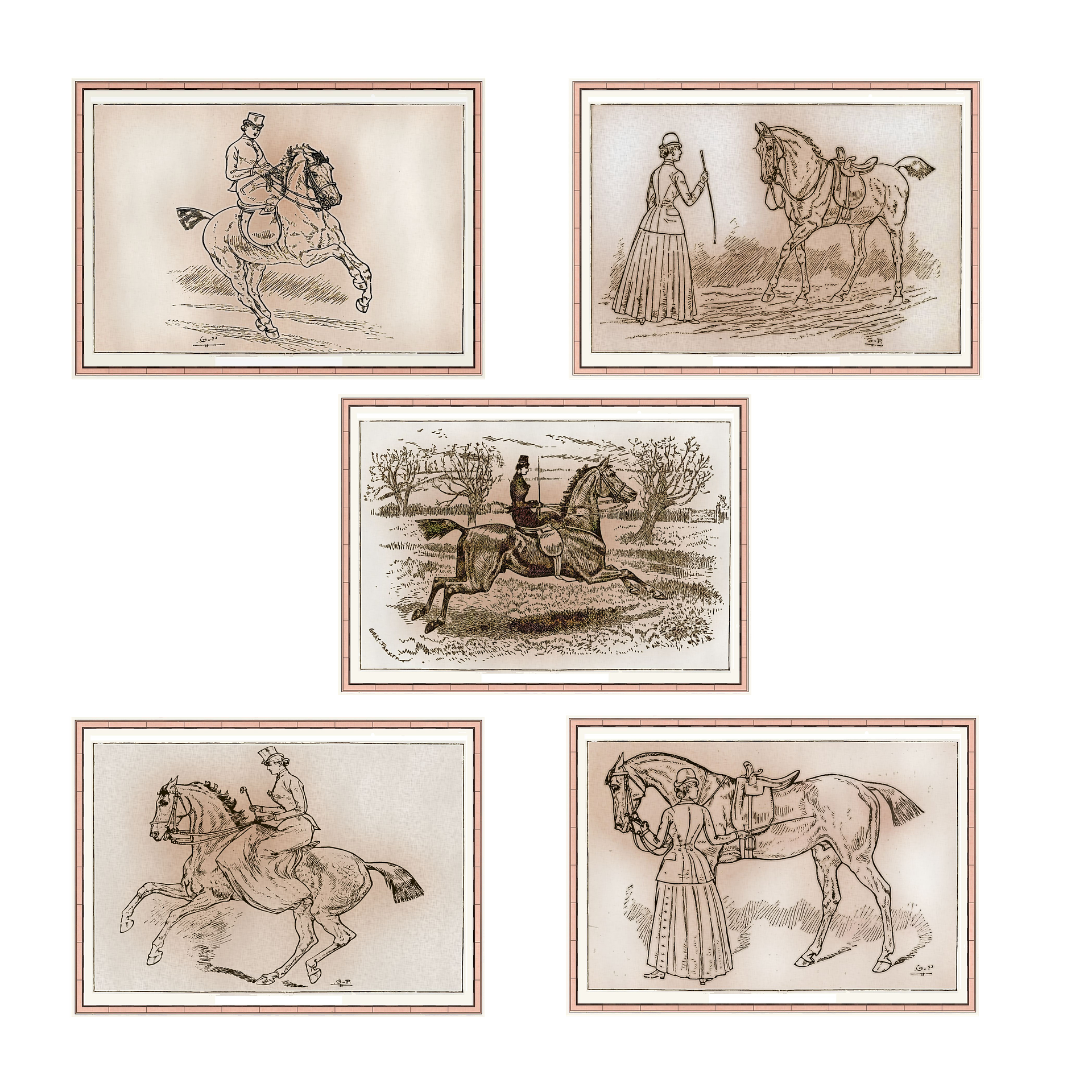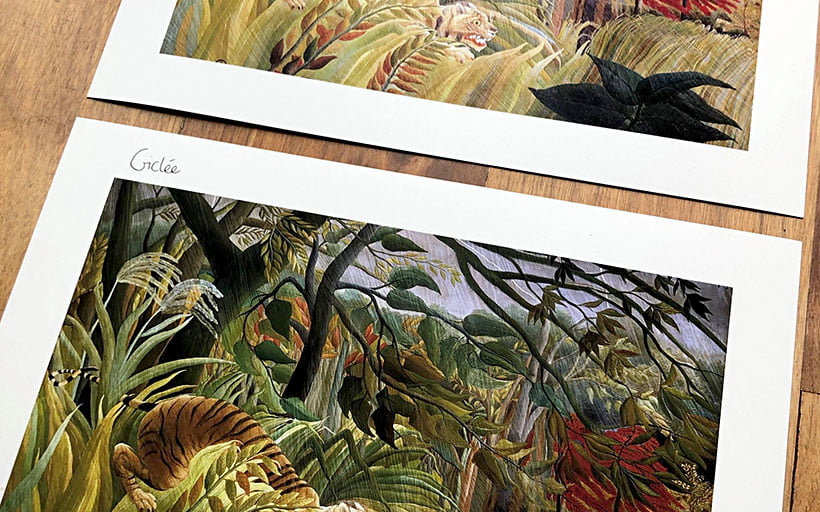The specially made color in the correct semi-liquid consistency is poured into the frame, the frame is placed in contact with the surface to be printed upon, and the color is scraped over the stencil with a rubber squeegee, thus being deposited upon the paper or other ground through the meshes of the uncoated areas of the silk. The wooden frame upon which the silk is stretched is made about two inches deep so that it forms a box (with the silk constituting the bottom) within which the paint can be conveniently manipulated with the squeegee. Although successful monochrome prints can be made with one impression, almost all of the development work on silk-screen printing as a fins-arts medium has been done with the aim of producing color prints in a full unlimited range.
My serigraphy differs from the basic methods in that I do the painting first. Afterwards I carefully count the exact number of colors. Next I list the colors in order; the bottom color first, and so on. My serigraphs range from 16 to 22 colors.
I begin the hand separation process by cutting one piece of clear plastic acetate for each color on my list. I nail registration bars (1″ x 2″ wooden strips) to the vertical sides of the painting and put registration marks on each of the four corners. Having sprayed a removable adhesive on the bars, I lay. or stretch, an acetate over the painting from bar to bar, making sure it is stretched evenly with no “waves” . Next I put a registration marker on the plastic perfectly over each marker on the four corners. Theoretically, every sheet and color I’m hunting for, I draw or paint that color exactly as it is on the plastic, directly over the painting – every little spec.
When this process is complete, I number it #1. With the second sheet I repeat the process, picking out the second color, and so on until I have done all of the colors. (Of course in an oil painting, I might have 7 or 8 gradations of green). For the serigraph I might break that down into 5 greens for the purpose of practicality. Inevitably, I’ll run into a green that is in between 2 green categories. Then I have to make a judgment call, putting that little spot into one category or another – then when I get to the next green category, I must remember what I did with those little spots in order to best get what I want. It is a conceptually and mentally all encompassing task! I have spent as much as 20 hours on one (color) separation. The entire separation process has taken me anywhere from 7 to 10 weeks per image. Remember, I have painted opaque ink on plastic, now I must check and “fill-in” each separation. When these separations are placed on a light table, I can see that al of the little spots are not truly opaque and solid, so I have to go back over them, tediously filling in all the spots making sure they are truly opaque. Even after all of this work we are nowhere near the printing stage!
Each separation must be transferred to the silkscreen boxes. I do this by putting an emulsion on the screen and the burning the image from the separation into the screen by using a light table (a large glass-topped table with fluorescent lights beneath). I place one finished separation down on the table. Then I put the screen with dried emulsion on top of the separation. I put a black board and weights on top of that so there is no space at all in between to be certain that no light will diffuse out. Next I turn on the lights which then burns the emulsion into the screen so it adheres to the sreen. Where the red opaque ink is “painted” the light cannot go through, thus in those little spots the emulsion does not get burned in. Then I hose down the screen and the emulsion falls out exactly where the opaque ink was, leaving a clean opening in the screen. That is where the ink can go through onto the paper, only in those spots. I do that with each separation and screen until the screens are ready for printing.
When I print I will print as many as I wish of one color, finish that screen, clean it, remove it, then go on to the next screen; each time registering the screen to the paper (the separation taped to the paper). As one can imagine, the correct registration is critical.
The inks I use are all oil base and opaque. I hand-mix a variety of colors together to get the exact color I want for each screen. To mix a complete set of inks (let’s say 20) for an edition, takes me usually 2 or 3 long days.
When printing, I have to have the screen hinged to a large table with i registered precisely. I lift the screen, set a sheet of paper in; lower the screen to just above the table, and pour the ink in at one end of the “screen-box”. Next the ink is pushed across the screen with a squeegee, and the squeegee is brought back to its original location. The screen is is put down flat on the table with paper underneath, and the squeegee is pushed across the screen, forcing the ink through the screen just in those precise places where it’s supposed to go. The screen is lifted by a pulley system so that it will stay elevated. The paper, which now has one color on it, is removed and placed on a drying rack. This is repeated for each sheet in the edition for this color. Then the screen and color is switched and the process is repeated, until each color has been applied to each sheet in the edition.
And that is how I do my serigraphy.



